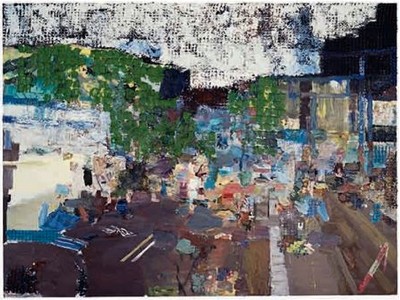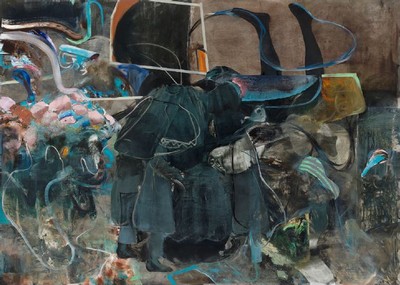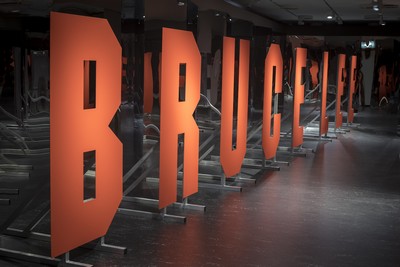Cindy Sherman: Tapestries
Sprüth Magers, Los Angeles
Through May 1, 2021
Monika Sprüth and Philomene Magers present the first solo exhibition at the Los Angeles gallery by internationally renowned artist CINDY SHERMAN, who has been associated with Sprüth Magers since the 1980s. In the latest series on view, Cindy Sherman explores her first non-photographic medium in a career spanning over 40 years: Tapestry. Featuring a dozen examples of her new and recent tapestries, the exhibition marks the début of these works as a coherent body of work.
In line with Cindy Sherman’s long-term photographic investigation into the construction of identity and the nature of representation, the images are based on pictures posted on the artist’s personal Instagram account, which she creates using widely available filters and face-altering apps. Impossible to print in large scale due to the low-resolution nature of the original Instagram images, they are transposed into woven textiles, which in turn resonate with the pixelation of the source material: Pixels, here, translate to the warp and weft of thread.
Produced in Belgium—with its long history of weaving and tapestry—and made of cotton, wool, acrylic and polyester, each tapestry invents and introduces an entirely unique character. In keeping with many of her previous works, the artist becomes nearly unrecognizable through changes in hair color, hairdo, eye color, skin tone, facial features and even gender. For example, one work depicts a figure with a blonde beard in front of mountains, water and pink skies, gazing upward with an inquisitive, hopeful look, as if to the heavens; another shows an almost extraterrestrial-looking being with pink hair, purple skin and two sets of flashy eyelashes taking a selfie in front of a prismatic sunset.
In Cindy Sherman’s tapestries, the interplay between character and background is as dynamic as ever. While earlier bodies of work feature distorted, yet still realistic, human figures, here they are increasingly digitally manipulated, resulting in exaggerated traits or the partial dissolution of the body as it begins to merge with its environment. The artist also continuously experiments with the images’ backgrounds, which range from plain white or grey to elaborate digital landscapes, often using Instagram effects. By combining contemporary, digital tools such as Photoshop and Instagram with such a traditional medium as tapestry—often associated with domestic settings and coded as female—Cindy Sherman also gives a nod to art history, gender and societal roles.
Since the late 1970s, Cindy Sherman has been photographing herself in guises inspired by stereotypes and characters from mass media, everyday life and art-historical imagery. Her unique approach reveals the degree to which these stereotypes are entrenched in the cultural and social imagination. Sherman’s influential, complex oeuvre draws upon cinema, realism and the grotesque, and is embedded in a number of postmodern and feminist theories.
CINDY SHERMAN (*1954, Glen Ridge, NJ) lives and works in New York. Her work was recently the subject of a large-scale exhibition at Fondation Louis Vuitton, Paris, which followed a major retrospective exhibition in 2019–20 at the National Portrait Gallery, London, and Vancouver Art Gallery. Other recent solo exhibitions include: Fosun Foundation, Shanghai (2018), The Broad, Los Angeles (2016), Dallas Museum of Art (2013), and Museum of Modern Art, New York, San Francisco Museum of Modern Art and Walker Art Center, Minneapolis (all 2012). Selected group exhibitions include Hayward Gallery, London (2018), National Gallery of Art, Washington, DC (2016), Tate Modern, London (2015), The Metropolitan Museum of Art, New York (2012) and MUMOK, Vienna (2011). Cindy Sherman also participated in the 54th Venice Biennale (2011) and co-curated a section of the 55th Venice Biennale (2013).
SPRÜTH MAGERS
5900 Wilshire Boulevard, Los Angeles, CA 90036
_______________________





















